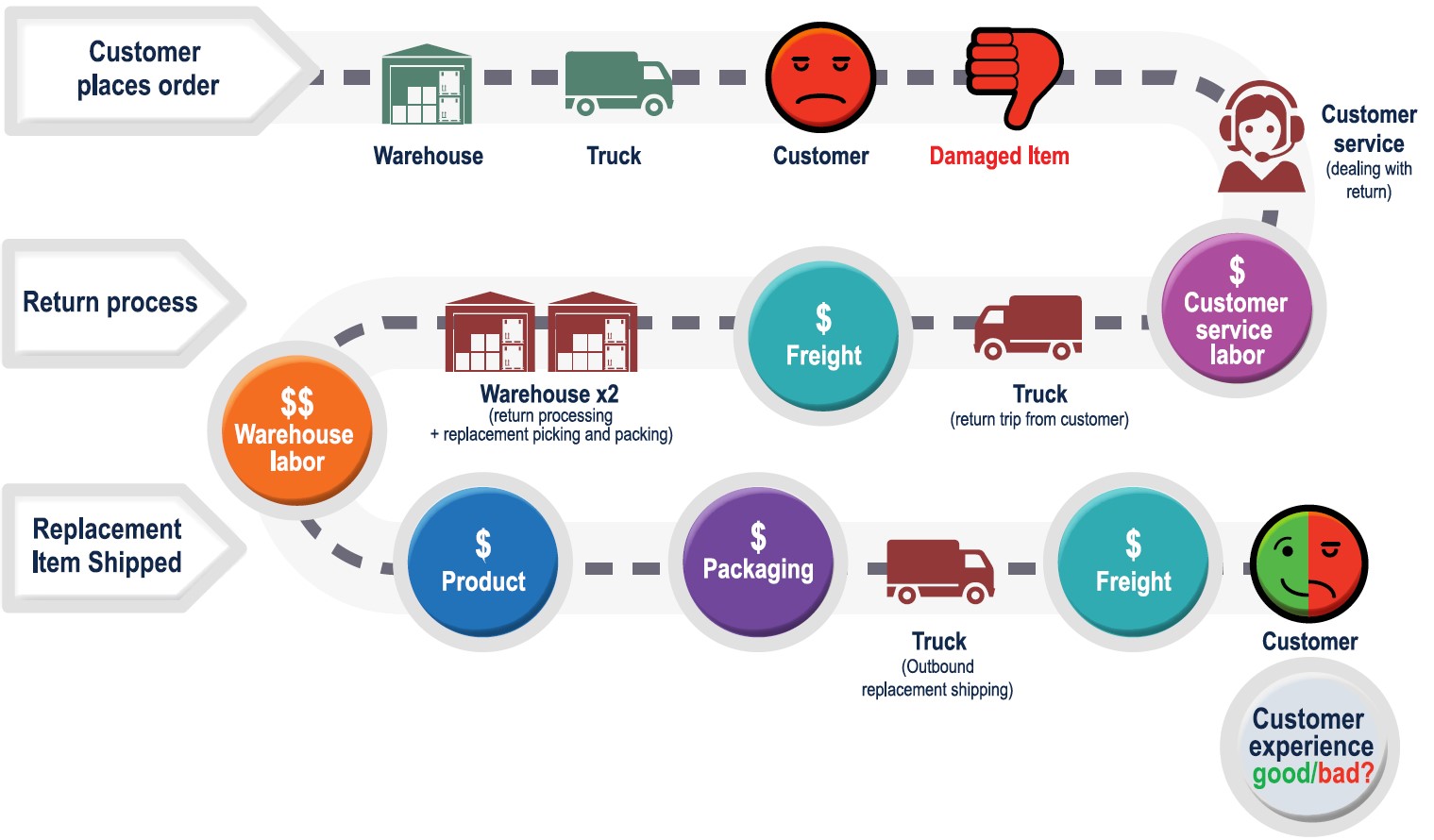Don’t DIM to Damage: Finding the right balance of protection while reducing package dimension
For high-volume shippers, one key to success is identifying the line between tight packaging and inadequate protection—and staying on the right side of it.
Tight or Right?
With parcel carriers charging for dimensional weight (if higher than the actual weight of a box) and consumers pushing for less packaging waste, shippers are motivated to minimize package size. This steers businesses away from using the proper amount of protective packaging materials to prevent damage, reduce shipping costs, minimize returns/claims, and ultimately satisfy customers.
So, what happens when packages sacrifice protection to downsize? Substandard and inadequate packaging materials are the main reason one in 10 packages arrive damaged, leading to 860 million reships annually.
Damage rates create a lose-lose situation, eating into profits since shippers must replace damaged products and packing materials and pay for shipping a second time. Customers, frustrated by a disappointing unboxing experience, may switch their brand loyalty. And the environment pays a considerable price, since more energy and materials are needed to manufacture, package and deliver replacement products. Not to mention the landfill accumulation associated with damaged items.

The proof is in the packaging
Fragile and breakable items need cushioning protection to be shipped through the parcel network to make it safely and damage free to the final destination. Seems intuitive, right? Not necessarily the case. Too often shippers are looking at one of their highest cost line items – freight. As a result, they begin to make decisions that may sacrifice protection to reduce the size of the box.
Before taking the leap to remove protective packaging to downsize a box, examine the following:
1. Is the current material truly providing cushioning protection or simply reducing the amount of void space within the box? If the material is only there to take up space in the box, you may have the option to reduce the box size and use a less bulky material such as Quantum paper void fill or wrapping it in an AirSpeed Quilt air cushion pattern or bubble cushioning.
2. Next, if the item is breakable and the current material is needed to cushion against vibration and impact, consider if there is a higher performing cushioning material that can provide the same protection, yet take up less space. A great example of this is the AirSpeed Hybrid Cushioning (HC) with barrier in the film. This solution provides a high level of protection and retains the air cushioning properties for an extended period of time. For shipping products that are the same shape and size, a great solution is foam that is fabricated to perfectly fit your product and box. The foam material makes exact use of your box size to eliminate excessive space.
3. Last but not least, look at the items that do not require protection such as soft goods or clothing. Consider packing those items into a poly mailer or bag to minimize shipping cost.
|
There are many factors that can impact your parcel shipping costs – from the various surcharges and shipping distance, to the size or weight of the box. Good news is, Pregis is here to help you sort it all out while also making sure you don’t experience a spike in product damage. To reduce damage rates, shippers need to take the guesswork out of shipping by putting their packaging solutions to the test. Packaging engineers like those at the Pregis IQ can help them do just that. The engineers, all certified by the International Safe Transit Association (ISTA), analyze the physical properties of shippers’ product lines and supply chains to create customized solutions, and then validate them. |
Substandard and inadequate packaging materials are the main reason one in 10 packages arrives damaged, leading to 860 million reships annually. |
Shipping with confidence
Taking into account cost, product durability and delivery hazards such as drops, vibration and compression, the packaging engineers can recommend the right types and amounts of protective packaging materials. Clients can then ship with confidence, knowing their packaging solutions already have aced their toughest test with ISTA & Amazon Packaging Support & Supplier Network (APASS) accreditation from the Pregis IQ.
However, the work doesn’t stop there— Pregis engineers are readily available to help shippers implement their packaging solutions, including training workers at warehouses and fulfillment centers in the proper way to use equipment and materials.
Pregis offers a wide range of training and educational resources, including virtual-reality tutorials, on-site demonstrations and instructional placards and visual aids. The resources are invaluable to shippers dealing with high employee turnover or trying to get seasonal staff up to speed quickly.
At Pregis, packaging is a passion, and data drives the decision-making. Once shippers have customized and validated shipping solutions, workers are trained to implement them—and then they’re squarely on the path to right-sized packages, damage rate reduction, lower shipping costs and higher customer satisfaction.

